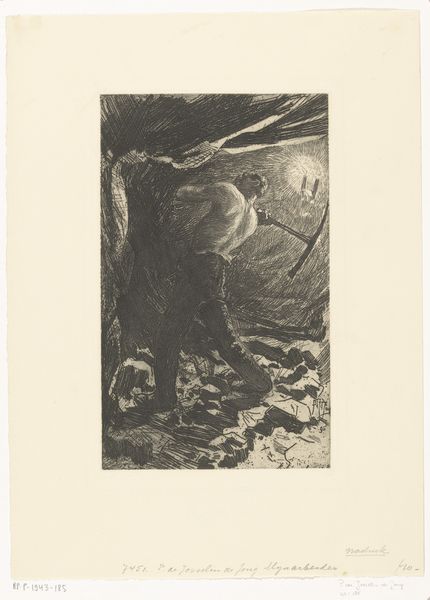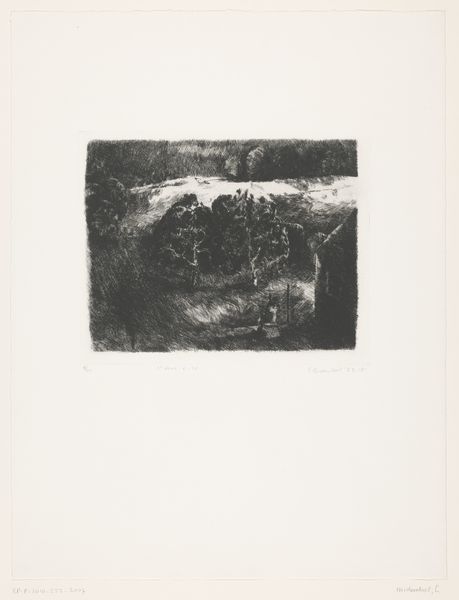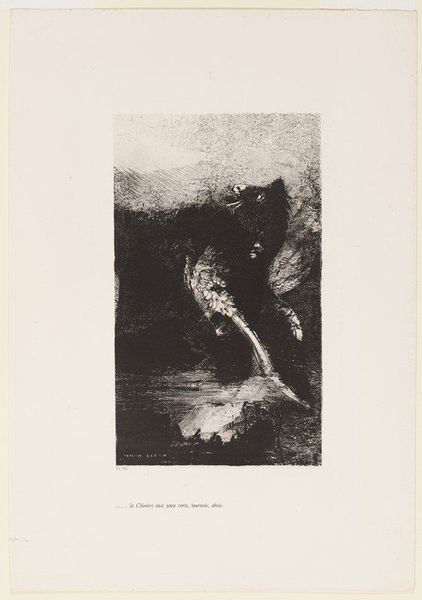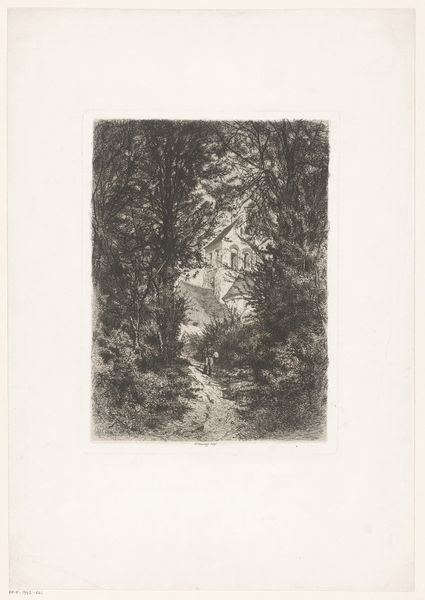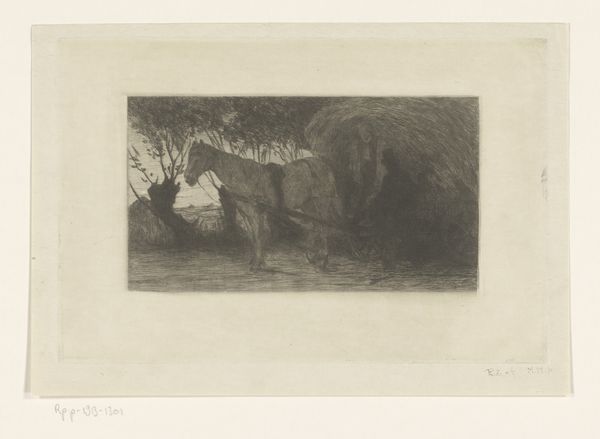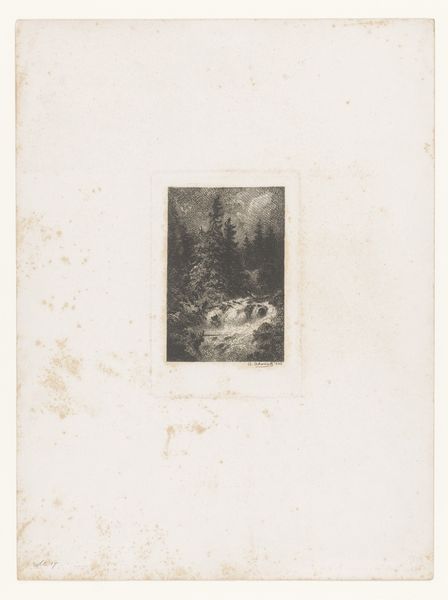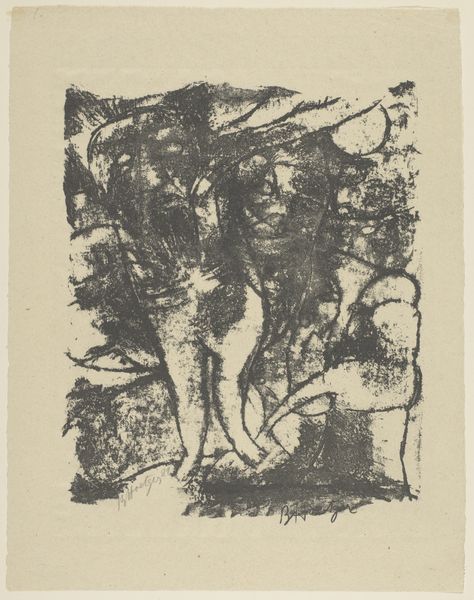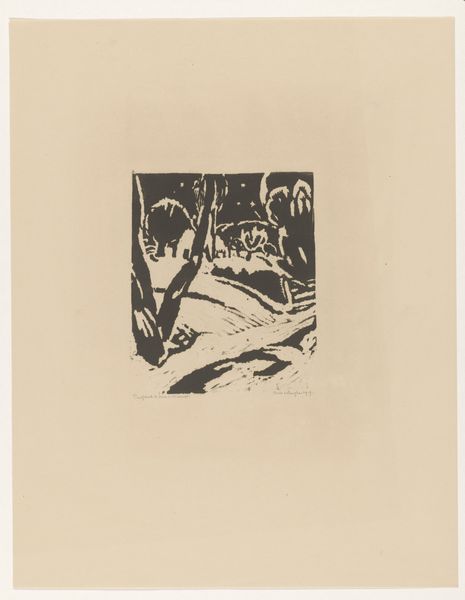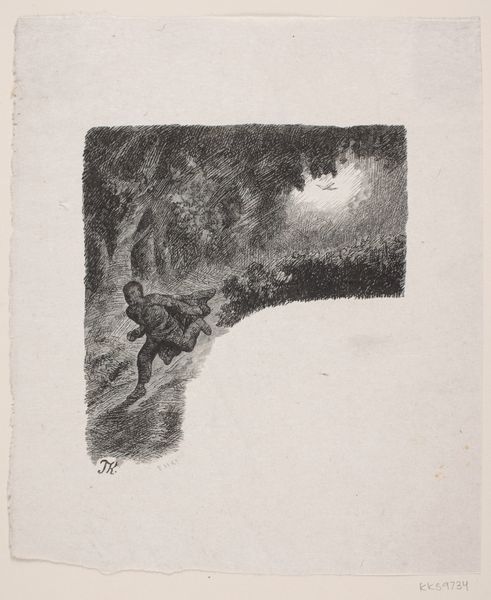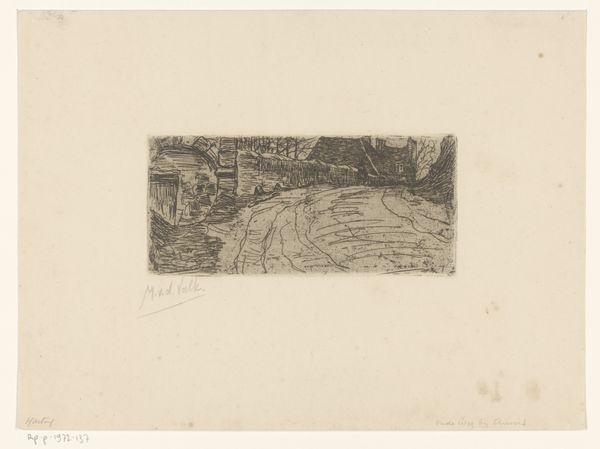
Dimensions: height 150 mm, width 140 mm, height 291 mm, width 241 mm
Copyright: Rijks Museum: Open Domain
Editor: This is "Daphnis and Chloé", an etching by Pierre Bonnard from 1902. It feels so light and airy, almost like a dream. I am drawn to the delicate line work creating the forms within the landscape. What stands out to you in this piece? Curator: Immediately, it's the composition's engagement with flatness. Bonnard utilizes line not to create depth through traditional perspective, but rather to build a surface of visual incidents. Consider how the light, scratchy lines defining the figures interact with the denser, almost abstract shapes in the background. How does this juxtaposition affect your perception of the figures' place within the scene? Editor: It’s as if the figures are not fully grounded in the landscape, almost floating on the surface of the image, flattening it, just like you said. What is the effect of the black areas on the overall composition? Curator: The stark contrast serves a crucial purpose, disrupting any illusion of depth and reinforcing the image’s essential flatness. The artist invites us to appreciate the composition as a construction of line, tone, and texture, and their relation on the page. The eye oscillates between areas of detail and bold areas of solid tone. Do you agree? Editor: Yes, that tension between detail and flatness really makes me look at the composition in a new way, understanding it as a flat surface rather than trying to look for realistic perspective. Thank you! Curator: It is this tension that allows the artist to show us not only *what* is depicted but to showcase the method of its depiction and ultimately call our attention to the act of *seeing* the image as itself.
Comments
No comments
Be the first to comment and join the conversation on the ultimate creative platform.
